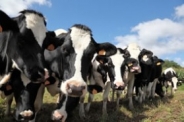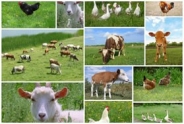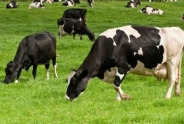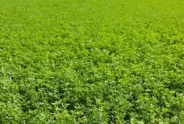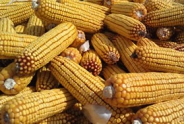Increasing Milk Production with Energy Efficient Lighting
Jackson Wright, Dairy
Northwest New York Dairy, Livestock & Field Crops
January 2, 2013
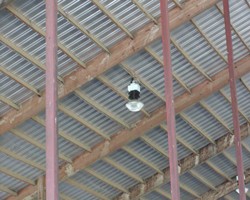
Common light fixtures found on dairy operations are T8 fluorescent, metal halide, high pressure sodium, and more recently, light emitting diode (LED). Each fixture has a unique set of benefits and drawbacks. For instance, fluorescent lights are energy efficient and usually pay for themselves within 2 years of installation. On the other hand, fluorescent fixtures require maintenance, perform poorly under cold or hot conditions, and contain mercury which could be disastrous should a bulb break around lactating cows. High intensity discharge (HID) fixtures provide ample light at ground level when ceiling heights are greater than 12 feet. However, these fixtures require a long pre-heat or start-up time. Finally, LED lights can provide high energy efficiency with a reported 100,000 hour operating life. This is significantly longer than the reported 20,000 hour operating life of fluorescent and HID fixtures. Moreover, LED lights are expected to have lower maintenance costs, contain no mercury, and provide instantaneous reliable light. Though LED fixtures are expensive when compared to the other fixtures.
These unique attributes can make it confusing to select fixtures best suited for dairy operations. However when considering implementing LDPP, LED fixtures may provide an edge. Consider this: lighting performance is often measured based on lumens/watt. This can be a misleading for dairy producers because lumens represent effective light for the human eye. Dairy cows perceive light differently than humans meaning a light fixture can provide ample lumens/watt, but may not provide light in the appropriate spectrum to stimulate milk yield. For instance, high pressure sodium fixtures provide high lumens/watt; however light output from these fixtures is biased towards longer wavelengths which cows cannot perceive. Fluorescent fixtures provide ample effective light for the cow; however under cold conditions light output of fluorescent fixtures can decrease by more than 40%. Cold conditions would be typical of most barns during the winter months, precisely when supplemental lighting from light fixtures would be required. LED fixtures can provide light in the same spectrum as sunlight and are more reliable under cold conditions. These two considerations suggest LED fixtures may be best suited for implementing LDPP; however this scenario needs to be investigated under barn conditions.
Currently, Pro-Dairy is conducting a study investigating the cost benefits of LED lighting systems and T8 fluorescent lighting systems on dairy operations. This study will account for the initial cost of the fixtures, fixture performance, operating life, expected energy savings, and milk production to determine which lighting system is the most cost effective for dairy producers.
Upcoming Events
Pasture Walk at C&H Farms of WNY, LLC
August 26, 2025
Akron, NY
C&H Farms is new to grazing beef cows. Come out to view, discuss, and learn what is working and what needs some adjusting.
Dairy Bovine Reproduction and Artificial Insemination Training Course en Espanol
October 14 - October 15, 2025
Join us for a two-day workshop with hands-on training that will be offered in Spanish in cooperation with Javier Cheang, Genex. Space is limited, register today!
Inaugural New York State Agritourism Conference
November 10 - November 11, 2025
Saratoga Springs, NY
SAVE THE DATE! Inaugural NEW YORK STATE AGRITOURISM CONFERENCE presented by Cornell Cooperative Extension Agritourism Program Work Team
Announcements
We're Hiring: Area Dairy Management Specialist
To apply:Please apply via Academic Jobs Online (https://academicjobsonline.org/ajo/jobs/30185).
Qualified candidates should submit a short cover letter, curriculum vitae, and contact information for three references.
Applications must be submitted by July 31, 2025.
For more information, please contact Peter Landre at ptl2@cornell.edu. Additional information about the Northwest New York Dairy, Livestock and Field Crops Team can be found at https://nwnyteam.cce.cornell.edu/.
Follow us on Instagram
See photos and reels of our most recent events and programs!Join us on Facebook!
Follow us on Facebook to get up to date posts about events, workshops and everything NWNY!Add us on LinkedIn!
Connect with us on LinkedIn to get more information about upcoming workshops and programs!

